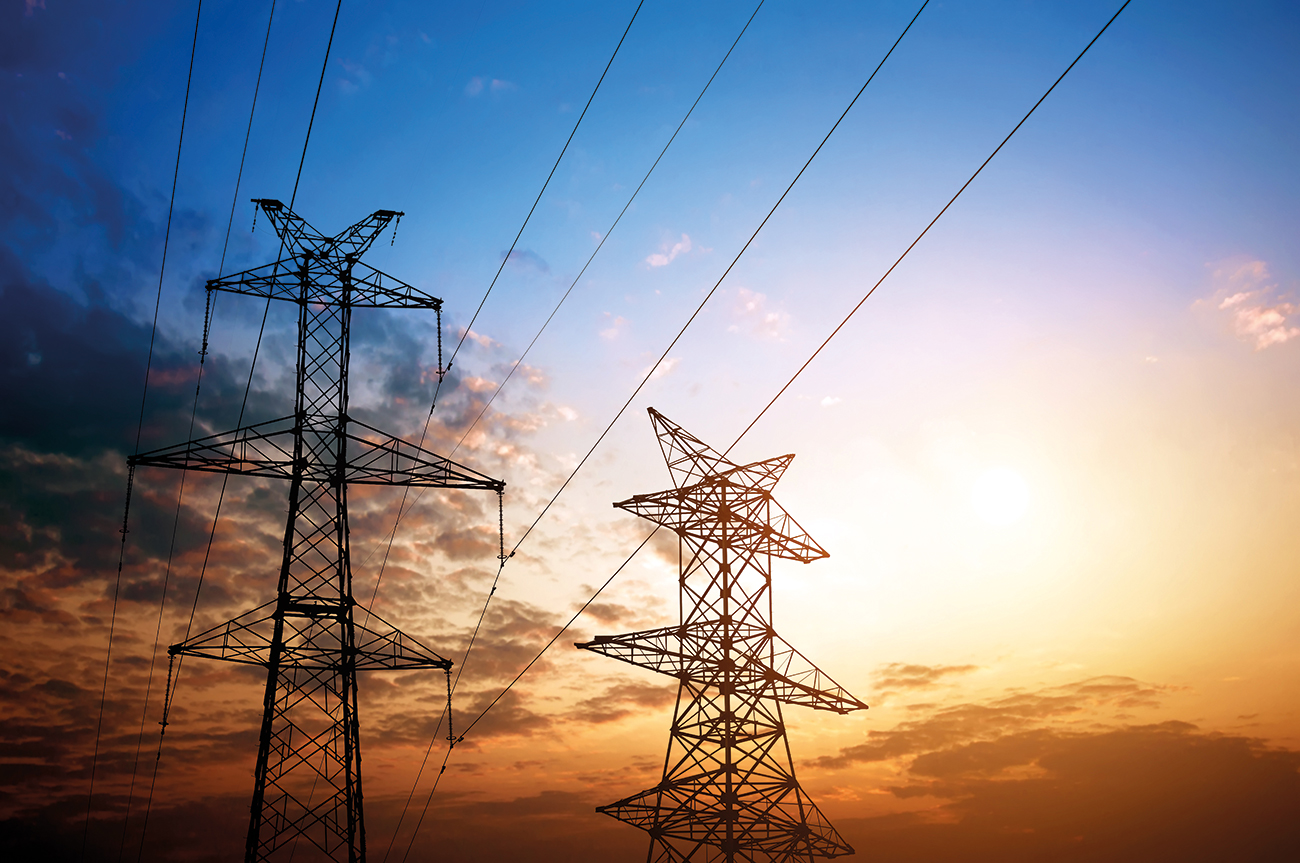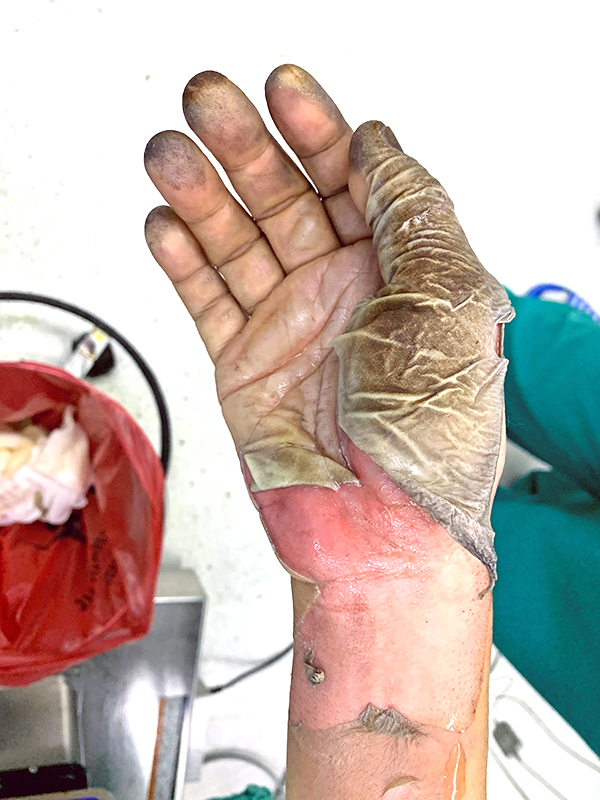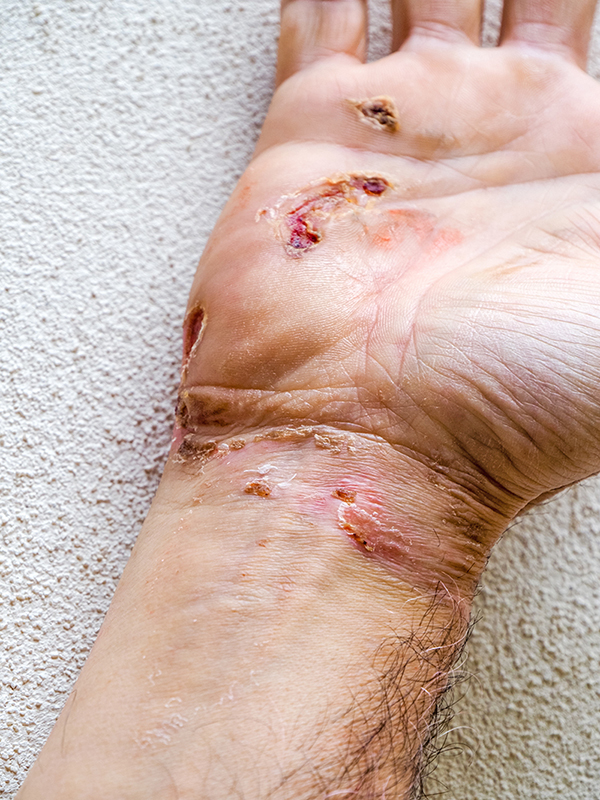Electrical burns
An electric shock is caused by contact with live electricity that sends an electric current through the body and can range from a mildly unpleasant sensation to a life-threatening emergency.
The severity of an electric shock depends on factors including the type of current and how high the voltage is. Voltage is the force of an electric current.
Low-voltage electricity is found in the home and most workplaces. Workplace incidents can cause serious injury and are often due to faulty or loose switches, defective appliances or frayed flexes.
High-voltage electricity is carried by overhead power lines and is typically found in electrical substations, factories, street lights, etc.
Burns are the most common injury from an electric shock but an electric shock can cause cardiac arrest and the casualty to stop breathing.

Signs and symptoms of electrocution
- Visual clues such as the location of the casualty near exposed wires
- Burns, particularly entry and exit burns where the electricity entered and left the body
- Unresponsiveness
- Difficulty breathing or not breathing at all
- A weak, erratic pulse or no pulse at all
- Possible cardiac arrest

Examples of electrical burns

Treating electrical burns
The priority is to ensure that it is safe for you to treat the casualty. If someone is still in contact with the electrical source that would put you in danger of electrocution.
If your casualty is unresponsive you must immediately check their breathing and begin CPR if required.
- Do not touch the casualty if they are still in contact with the electrical source
- Break contact between the electrical source and the casualty by turning off the electricity supply at the consumer unit (fuse box) or if you cannot do that, remove the person from the electrical source using a material that does not conduct electricity, such as a wooden stick or a wooden chair
- Care should be taken if the casualty is in contact with water which carries electricity
- Start cooling the burn as quickly as possible with cool or cold running tap water for at least 20 minutes
- Call 999/112 and ask for an ambulance
- If it’s possible, remove any watches or jewellery around the affected area but do not remove if it will directly affect the burn
- Cover the burn with a suitable sterile dressing that is not fluffy. You can cover it with cling film if you have no appropriate dressing
- Treat the casualty for shock
- Monitor their condition throughout and await the emergency services

High-voltage injuries
- Do not approach a person who has been electrocuted by a high-voltage source unless you have been informed by an official person that it is safe to do so
- Immediately call 999/112
- Everyone, including yourself and any bystanders must be distanced from the electrical source by at least 18 metres. This is due to the possibility of arcing which is when electricity jumps from one connection to another
- If it is safe to approach the casualty then check for a response and if unresponsive check their breathing levels and begin CPR if required
- Treat any burns, as above, but only when the casualty is in a stable condition